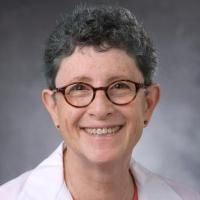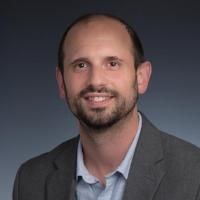Mesenchymal stromal cells reprogram monocytes and macrophages with processing bodies.
Date
2021-01
Journal Title
Journal ISSN
Volume Title
Repository Usage Stats
views
downloads
Citation Stats
Abstract
Mesenchymal stromal cells (MSCs) are widely used in clinical trials because of their ability to modulate inflammation. The success of MSCs has been variable over 25 years, most likely due to an incomplete understanding of their mechanism. After MSCs are injected, they traffic to the lungs and other tissues where they are rapidly cleared. Despite being cleared, MSCs suppress the inflammatory response in the long term. Using human cord tissue-derived MSCs (hCT-MSCs), we demonstrated that hCT-MSCs directly interact and reprogram monocytes and macrophages. After engaging hCT-MSCs, monocytes and macrophages engulfed cytoplasmic components of live hCT-MSCs, then downregulated gene programs for antigen presentation and costimulation, and functionally suppressed the activation of helper T cells. We determined that low-density lipoprotein receptor-related proteins on monocytes and macrophages mediated the engulfment of hCT-MSCs. Since a large amount of cellular information can be packaged in cytoplasmic RNA processing bodies (p-bodies), we generated p-body deficient hCT-MSCs and confirmed that they failed to reprogram monocytes and macrophages in vitro and in vivo. hCT-MSCs suppressed an inflammatory response caused by a nasal lipopolysaccharide challenge. Although both control and p-body deficient hCT-MSCs were engulfed by infiltrating lung monocytes and macrophages, p-body deficient hCT-MSCs failed to suppress inflammation and downregulate MHC-II. Overall, we identified a novel mechanism by which hCT-MSCs indirectly suppressed a T-cell response by directly interacting and reprogramming monocytes and macrophages via p-bodies. The results of this study suggest a novel mechanism for how MSCs can reprogram the inflammatory response and have long-term effects to suppress inflammation.
Type
Department
Description
Provenance
Subjects
Citation
Permalink
Published Version (Please cite this version)
Publication Info
Min, Hyunjung, Li Xu, Roberta Parrott, Christopher C Overall, Melina Lillich, Emily M Rabjohns, Rishi R Rampersad, Teresa K Tarrant, et al. (2021). Mesenchymal stromal cells reprogram monocytes and macrophages with processing bodies. Stem cells (Dayton, Ohio), 39(1). pp. 115–128. 10.1002/stem.3292 Retrieved from https://hdl.handle.net/10161/24563.
This is constructed from limited available data and may be imprecise. To cite this article, please review & use the official citation provided by the journal.
Collections
Scholars@Duke

Teresa Kathleen Tarrant
I first became interested in clinical immunology as a medical student studying autoimmune inflammatory eye disease at the National Institutes of Health. Since then, I have been inspired to understand what causes autoimmunity and immune deficiency disorders in order to improve the quality of life for my patients. I see patients with multiple complex immune disorders with particular expertise in autoimmune and Rheumatoid arthritis, primary Sjogren's syndrome, and the immunodeficiency disorders Common Variable Immunodeficiency (CVID), Adenosine Deaminase Deficiency (ADA) disorders, and WHIM (Warts, Hypogammaglobulinemia, Infections, and Myelokathexis). My research investigates immune targets that may impact either the development of immune disease or identify new therapies for patients. The goal is to help us understand why and how immunologic diseases develop so that we may better treat them.

Joanne Kurtzberg
Dr. Kurtzberg is an internationally renowned expert in pediatric hematology/oncology, pediatric blood and marrow transplantation, umbilical cord blood banking and transplantation, and novel applications of cord blood and birthing tissues in the emerging fields of cellular therapies and regenerative medicine. Dr. Kurtzberg serves as the Director of the Marcus Center for Cellular Cures (MC3), Director of the Pediatric Transplant and Cellular Therapy Program, Director of the Carolinas Cord Blood Bank, and Co-Director of the Stem Cell Transplant Laboratory at Duke University. The Carolinas Cord Blood Bank is an FDA licensed public cord blood bank distributing unrelated cord blood units for donors for hematopoietic stem cell transplantation (HSCT) through the CW Bill Young Cell Transplantation Program. The Robertson GMP Cell Manufacturing Laboratory supports manufacturing of RETHYMIC (BLA, Enzyvant, 2021), allogeneic cord tissue derived and bone marrow derived mesenchymal stromal cells (MSCs), and DUOC, a microglial/macrophage cell derived from cord blood.
Dr. Kurtzberg’s research in MC3 focuses on translational studies from bench to bedside, seeking to develop transformative clinical therapies using cells, tissues, molecules, genes, and biomaterials to treat diseases and injuries that currently lack effective treatments. Recent areas of investigation in MC3 include clinical trials investigating the safety and efficacy of autologous and allogeneic cord blood in children with neonatal brain injury – hypoxic ischemic encephalopathy (HIE), cerebral palsy (CP), and autism. Clinical trials testing allogeneic cord blood are also being conducted in adults with acute ischemic stroke. Clinical trials optimizing manufacturing and testing the safety and efficacy of cord tissue MSCs in children with autism, CP and HIE and adults with COVID-lung disease are underway. DUOC, given intrathecally, is under study in children with leukodystrophies and adults with primary progressive multiple sclerosis.
In the past, Dr. Kurtzberg has developed novel chemotherapeutic drugs for acute leukemias, assays enumerating ALDH bright cells to predict cord blood unit potency, methods of cord blood expansion, potency assays for targeted cell and tissue based therapies. Dr. Kurtzberg currently holds several INDs for investigational clinical trials from the FDA. She has also trained numerous medical students, residents, clinical and post-doctoral fellows over the course of her career.

Anthony J Filiano
Immune dysfunction has been described in most neurological disorders. Preclinical strategies targeting these disorders have primarily concentrated on directly targeting synaptic function; however, most of these approaches have failed. Our lab is interested in understanding the complex interactions between the immune system and nervous system with the intent to uncover novel therapeutic targets to combat diseases such as autism spectrum disorder.
Projects in the Lab:
- T cells support proper brain function and mice lacking T cells have behavioral deficits, such as decreased learning and memory and social withdrawal. Further, alterations in T cell function have been described in many neurological disorders. Interestingly, T cells are not present in the parenchyma of a healthy brain; yet they patrol the meninges and likely influence neuronal activity via the release of soluble cytokines. We are investigating how cytokines, and other immune-cell derived molecules, can regulate neural circuits and how an imbalance in these molecules might affect the brain in autism spectrum and other related disorders.
- Cord blood contains a rich source of immune-modulating components including, stem cells, immune cells, and soluble factors. Recent work has demonstrated the efficacy of using cord-blood derived components to promote myelination and increase function in neurological conditions such as multiple sclerosis, autism spectrum disorder, and aging. We are investigating how cord-blood derived cells and products can be used to promote healthy brain function and alleviate behavioral dysfunction in these devastating neurological conditions.
Unless otherwise indicated, scholarly articles published by Duke faculty members are made available here with a CC-BY-NC (Creative Commons Attribution Non-Commercial) license, as enabled by the Duke Open Access Policy. If you wish to use the materials in ways not already permitted under CC-BY-NC, please consult the copyright owner. Other materials are made available here through the author’s grant of a non-exclusive license to make their work openly accessible.
